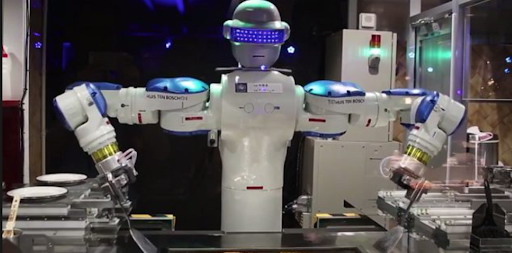Voice robots are becoming an increasingly popular way to automate processes, which allows you to improve customer service, free employees from routine and optimize costs. This tool is widely used in marketing, sales, customer service, recruiting and other areas. To get the most out of bots, you need to be thoughtful about how you implement and use them. Let’s look at how to avoid common mistakes at the start of a project and make a voice robot that will be useful to a business and its clients.
Rational approach
The automation trend is fueling companies’ interest in voice technologies. But you shouldn’t mindlessly follow the market trend and implement a bot just to have it. It is important to analyze current business processes and identify which communications require debugging.
In some cases, bots can save millions by eliminating the participation of real employees from processing similar requests, while for other businesses the economic effect will be delayed. A fairly common example from our practice is when the company’s priority is to improve the quality of service. On the incoming line, a voice robot can provide self-services after hours, as well as eliminate queues on the line and the human factor: errors and rudeness of employees. In addition, voice assistants help with collecting feedback. It is often critical to conduct surveys immediately after a specific event, such as the delivery of a product, to ensure that the information is processed quickly. Bots flawlessly cope with calling a database of any size, categorizing answers, and summing up survey results.
The introduction of virtual employees may not provide immediate results in the form of cost savings, but it will have a significant impact on increasing loyalty, and therefore increasing the lifetime value (LTV) of customers and, ultimately, profits. The main thing is to use voice robots where it is relevant.
Artificial intelligence is the basis
When choosing a solution from the variety available on the market, you must take into account that you can create a bot that will provide a quick response to a client’s call, but will not allow you to achieve a high level of service. Simple bots work like a tone menu: they greet you, ask a question and ask you to press 1, 2, 3 on the smartphone keyboard as an answer, and then route the call to an operator. Most often, this approach only causes irritation on the part of clients.
Voice technology for business has come a long way, and we shouldn’t lag behind. Today, intelligent robots can understand the speech of subscribers, even if these are not monosyllabic answers “yes.” Bots analyze not individual words, but entire sentences, taking into account the nuances and context of what was said. This is achieved through speech recognition, understanding and natural language processing technologies. In order to quickly improve the skill of determining clients’ intentions and conducting a logical dialogue, choosing the branch of the script that corresponds to the client’s response, the robot must be able to learn on the basis of a neural network. The “humanization” of the bot is realized through pre-recorded remarks voiced by an employee or announcer.
If you make a robot, then a “smart” one – based on artificial intelligence, which has become an integral part of our daily life. Therefore, when choosing a service to launch a bot, it is worth analyzing what technologies are embedded inside, and not focusing only on the cost of a minute and related services.
Thoughtful script and lines
Script development is one of the important stages. The flexibility and variability of the script allows the bot to work out counter questions, joke where appropriate, and return the conversation to the right direction, and most importantly, be useful and leave a pleasant impression of your company on the client.
A ready-made script for call center or sales department operators can be taken as a basis, but must be adapted to the robot, providing it with proactivity and the ability to lead the client from point A to point B of the dialogue.
In addition to the main script, a background script is needed to answer counter questions from clients that may be asked in isolation from the topic of the conversation. To provide for absolutely everything, of course, is an impossible task, but it is quite possible to add universal general phrases, such as “I’ll check with my colleagues and call you back.” A number of bots get lost and simply hang up.
To simplify the preparation of the script, you can digitize the dialogues of the call center or sales department with clients, typify them and highlight frequently asked questions and answers to them. Another option for obtaining information is to survey existing clients.
Setting up and administering a script is a process that any specialist can handle today. User platforms make it possible to assemble a background and main script in constructor mode, teach the robot to understand complex semantic structures and decide how to develop a conversation with a client.
If the robot must be indistinguishable from an ordinary employee, then it is appropriate to add human-specific reservations, minor errors, interjections, etc. to the remarks. And the robot must speak in the language of the target audience, briefly and to the point. In the pursuit of an absolutely ideal virtual employee, companies often miss such nuances, and the robot does not acquire a human face.
It is important to understand that the proportion of customers who will ask a robot to transfer them to an operator depends on the quality of its work, and not on the fact that customers prefer to communicate with a live operator. If a voice robot sounds human, understands questions well, and gives relevant information, then most customers would rather talk to it than conduct 5-15 minutes in line on line.
Iterative testing
A voice bot can be launched in one day or even in a few hours. The question is whether he will be “smart” enough to communicate with clients. Our experience shows that for many tasks it is possible to set up a database of script templates and intents (key meanings for assessing the client’s intentions), on the basis of which the bot decides which branch of the script to conduct a conversation on. Then setup and testing are quick, and the speed does not affect the quality of the robots.
But if the task is more complex, say processing incoming calls to a hotline, then the bot script can be voluminous, unique and multi-level. In this case, you should set aside time for thorough testing of the bot on small databases. The more attention you pay at the start to training the robot and adjusting the script, the higher the conversion to the desired result will be after it is put into commercial operation.
Whether learning about voice bots or trying to solve an urgent problem, a number of companies want to implement the technology as soon as possible, and sometimes on the same day. Often, when choosing a contractor, the timing of the project becomes a top priority. But impulse buying and rushing can be costly.
Analytics
When launching a voice robot, another key factor in the success of the project is analytics. To control the quality of the bot’s work, it is necessary to promptly identify deviations in dialogues, weak points in the script, and eliminate gaps. Therefore, the results of the bot’s communications with clients should be clear, and the reports should be easily customizable. The time gap between receiving and processing call data and the call itself is unacceptable.
In order not to be disappointed in voice robots, you should carefully choose a platform for their launch or a vendor who will provide a turnkey service. Check in advance for the availability of project support and its conditions, access to the script for independently adjusting the bot’s operation, as well as the format and capabilities of analytics.





